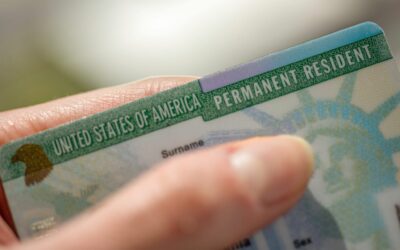Deferred Action by President Obama’s Executive Order: Changing and Amplifying the DACA and DAPA Program
This article aims to reflect the new changes to the use of deferred action for people who entered the United States as children (DACA). It also explains the new deferred action program for parents of children with a U.S. citizen or permanent residence (Greencard.) In the coming weeks, I will be writing articles with more details on the different parts of the announced changes and how to apply for deferred action and other benefits. The following is a general summary. DACA (Deferred Action for Childhood Arrivals) In a memorandum dated June 15, 2012, Secretary Napolitano issued instructions on how to exercise tax discretion with respect to certain young people in the country without documents. Based on President Obama’s announcement on November 20, 2014, the following changes supplement and modify those instructions. The Reason for Deferred Action The Department of Homeland Security and its immigration components are responsible for enforcing the country’s immigration laws. Due to limited resources, DHS and its components cannot respond to all immigration violations or deport all individuals who are in the United States illegally. As with almost all other law enforcement agencies, DHS has to exercise a process of discretion in law enforcement. Secretary Napolitano noted two years ago, when she issued her guidance of procedural discretion regarding children, that “our Nation’s immigration laws must be enforced strongly and sensibly. They are not designed to be blindly enforced without regard to the individual circumstances of each case.” Deferred action is a form of discretion whereby the Registrar gives less priority to an individual case for humanitarian reasons, administrative expediency, or in the interest of the department’s or agency’s overall execution mission. As an act of procedural discretion, deferred action is available whenever granted on a case-by-case basis, and may be terminated at any time at the agency’s discretion. Deferred action does not confer any form of legal status in this country, much less citizenship. It simply means that, for a certain period of time, an individual is allowed to be legally present in the United States. Deferred action also cannot confer a permanent residential (green card). Changes to DACA (Deferred Action for Youth) DACA established that those who were under 31 years of age on June 15, 2012, who entered the United States before June 15, 2007 (5 years prior) as children under the age of 16 and who met the educational and public safety criteria, are eligible for deferred action on a case-by-case basis. The initial DACA announcement of June 15, 2012 provided deferred action for a period of two years. On June 5, 2014, the United States Citizenship and Immigration Service announced that those who already had DACA could apply to renew their deferred action for an additional two years. In order to further effect this program, USCIS has been ordered to amplify the DACA program as follows:
- Remove the age limit. DACA will apply to all eligible immigrants who entered the United States under the age of 16 and before the new date of January 1, 2010, regardless of their current age. The restriction that excluded those who were over 31 years old on the date of announcement (i.e., those who were born before June 15, 1981) no longer applied. This restriction will no longer apply.
- Extend the renewal of DACA and work authorization to three years instead of the current two-year increments. This change will apply to all first-time applications as well as all renewal applications as of November 24, 2014. As of that date, USCIS must issue all employment authorization documents (EADs) for three years, including those who have applied and are waiting for their two-year work authorization document for their DACA application. USCIS should also consider the means of extending work permits with two years already issued to three years.
- Adjust the entry date requirement. In order to align the DACA program with the authorization of another type of deferred action described below, the eligibility date on which a DACA applicant must have been in the United States must be adjusted from June 15, 2007 through the new date of January 1, 20I0.
- USCIS must begin accepting applications under the new applicant criteria no later than ninety (90) days from the date of this announcement (November 20, 2014.)
Deferred Action for Parental Accountability (DAPA) The executive order directs USCIS to establish a process, similar to DACA, that is being called DAPA (Deferred Action for Parental Accountability) to exercise procedural discretion by using deferred action, on a case-by-case basis, to those individuals who:
- have, on the date of November 20, 2014, a son or daughter who is a U.S. citizen (by birth or naturalization) or lawful permanent resident;
- have resided continuously in the United States since before January 1, 2010;
- were physically present in the United States on the date of November 20, 2014.
At the time of making a request for consideration of a deferred action with uscis, the applicant;
- cannot have legal status as of November 20, 2014;
- are not a priority as reflected in the Memorandum of November 20, 2014 which explains the priority policy for the apprehension, detention and deportation of undocumented immigrants and
- you must not present any other factor that, in the exercise of discretion, renders the grant of deferred action inappropriate.
Applicants will be required to submit the applications necessary for deferred action under the new criteria described above. Applicants must also submit biometrics (fingerprints) to USCIS to conduct background checks similar to the background check required of DACA applicants. Each person applying for deferred action under the above criteria may also be eligible to apply for a work permit for the period of the deferred action.
- Deferred action granted under DAPA will be for a period of three years.
- Applicants will have to pay the costs for the work permit and to take fingerprints, which are currently $465.00.
- Costs cannot be avoided and, like DACA, cost exemptions will be very limited.
USCIS must begin accepting applications under DAPA from eligible applicants (parents) no later than one hundred and eighty (180) days after November 20, 2014; That is, May 2015. As with DACA, immigration authorities (ICE, USCIS, or CBP) must consider the above criteria for all individuals if the individual is already in deportation proceedings or subject to a final order of deportation. specifically:
- Immigration and Customs Enforcement (ICE) and U.S. Customs and Customs Protection Customs and Border Protection (CBP)) are instructed to immediately begin identifying persons in their custody, as well as newly found persons, who meet the above criteria and may therefore be eligible for deferred action to avoid additional expenditures of resources with respect to these individuals.
- ICE is also directed at reviewing pending removal (deportation) cases, and administratively closing or terminating cases of identified individuals who meet the above criteria, and referring such individuals to USCIS for deferred action determinations on a case-by-case basis.
- ICE should also establish a process to allow individuals in deportation proceedings to identify themselves as candidates for deferred action.
- The process for applying with USCIS for deferred action should also be available to individuals subject to final removal (deportation) orders who meet the above criteria.
Immigration officials will be given information about the specific criteria for deferred action, but the final determination as to whether an immigrant will be granted deferred action will be based on a case-by-case basis. The memorandum of November 20, 2014 does not confer any substantive rights, immigration status or avenues for citizenship. Only an act of Congress can grant these rights. It remains within the authority of the Executive Branch, however, which establishes the policy for the exercise of prosecutorial discretion and deferred action within the framework of current legislation. The memorandum of November 20, 2014 is an exercise of that authority.
Conclusion Applying for deferred action is a complex process that should not be done without the help of a good immigration attorney who has experience with applications for deferred action. This can avoid setbacks or errors in application tactics and increase the likelihood of success with the application.
Our offices are here to serve you. Call for a free consultation to confirm if you are eligible for this deferred action benefit and to prepare your application.





